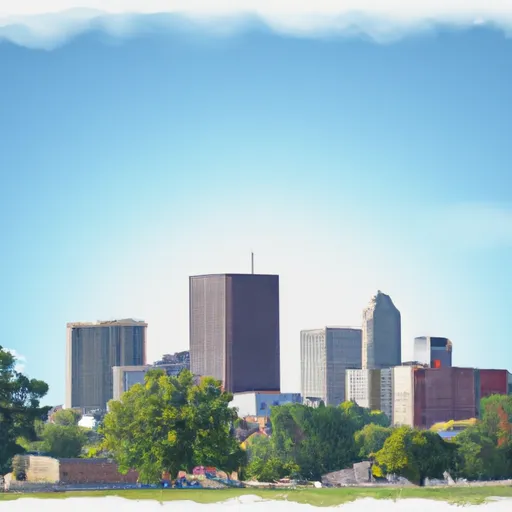-
 Snoflo Premium
Snoflo Premium
Get unlimited access to all our content
With no Ad interruptions! - Start Your Free Trial Login with existing account
Omaha
Eden Index
Climate
8.3
•
Recreation
4.3
•
Community
1.5
•
Safeguard
5.2/10

Omaha, Arkansas is a small town located in Boone County. The climate in Omaha is characterized by hot summers and mild winters. It experiences an average annual rainfall of around 44 inches. The hydrology constituents of the area include the Buffalo National River and Crooked Creek, offering picturesque landscapes and recreational opportunities like canoeing, kayaking, and fishing. The Buffalo National River is especially renowned for its clear waters and scenic bluffs, attracting outdoor enthusiasts from all over. Additionally, the surrounding Ozark Mountains provide ample opportunities for hiking, camping, and wildlife observation. Omaha, Arkansas is a charming destination for those seeking a natural and outdoor recreational experience.
What is the Eden Index?
The Snoflo Eden Index serves as a comprehensive rating system for regions, evaluating their desirability through a holistic assessment of climate health, outdoor recreation opportunities, and natural disaster risk, acknowledging the profound impact of these factors on livability and well-being.
Climate Health Indicator (CHI): 8.3
Omaha receives approximately
1094mm of rain per year,
with humidity levels near 81%
and air temperatures averaging around
14°C.
Omaha has a plant hardyness factor of
6, meaning
plants and agriculture in this region thrive during a short period during spring and early summer. Most
plants will die off during the colder winter months.
By considering the ideal temperature range, reliable water supplies, clean air, and stable seasonal rain or snowpacks, the Climate Health Indicator (CHI) underscores the significance of a healthy climate as the foundation for quality living.
A healthy climate is paramount for ensuring a high quality of life and livability in a region, fostering both physical well-being and environmental harmony. This can be characterized by ideal temperatures, reliable access to water supplies, clean air, and consistent seasonal rain or snowpacks.
Weather Forecast
Streamflow Conditions
Upper White
Area Rivers
Upper White
Snowpack Depths
Upper White
Reservoir Storage Capacity
Upper White
Groundwater Levels
Recreational Opportunity Index (ROI): 4.3
The Recreational Opportunity Index (ROI) recognizes the value of outdoor recreational options, such as parks, hiking trails, camping sites, and fishing spots, while acknowledging that climate plays a pivotal role in ensuring the comfort and consistency of these experiences.
Access to outdoor recreational opportunities, encompassing activities such as parks, hiking, camping, and fishing, is crucial for overall well-being, and the climate plays a pivotal role in enabling and enhancing these experiences, ensuring that individuals can engage in nature-based activities comfortably and consistently.
Camping Areas
| Campground | Campsites | Reservations | Toilets | Showers | Elevation |
|---|---|---|---|---|---|
| Alpine Ridge - De Gray Lake | 49 | 473 ft | |||
| Bucktail Camp Complex | 40 | 296 ft | |||
| DeGray Lake State Park | 113 | 403 ft | |||
| Ozan Point - De Gray Lake | 50 | 422 ft | |||
| Iron Mountain - De Gray Lake | 69 | 456 ft | |||
| White Oak Lake State Park | None | 208 ft | |||
| Caddo Drive - De Gray Lake | 72 | 415 ft | |||
| Turtle Slide | None | 223 ft | |||
| Edgewood - De Gray Lake | 51 | 409 ft | |||
| Logoly State Park | None | 327 ft |
Nearby Ski Areas
Catastrophe Safeguard Index (CSI):
The Catastrophe Safeguard Index (CSI) recognizes that natural disaster risk, encompassing floods, fires, hurricanes, and tornadoes, can drastically affect safety and the overall appeal of an area.
The level of natural disaster risk in a region significantly affects safety and the overall livability, with climate change amplifying these risks by potentially increasing the frequency and intensity of events like floods, fires, hurricanes, and tornadoes, thereby posing substantial challenges to community resilience and well-being.
Community Resilience Indicator (CRI): 1.5
The Community Resilience Indicator (CRI) recognizes that education, healthcare, and socioeconomics are crucial to the well-being of a region. The CRI acknowledges the profound impact of these elements on residents' overall quality of life. By evaluating educational resources, healthcare accessibility, and economic inclusivity, the index captures the essential aspects that contribute to a thriving community, fostering resident satisfaction, equity, and social cohesion.

